What comes to mind when I tell you to picture a David Lynch film? Whether you thought of the Red Room from Twin Peaks, the Eraserhead baby, a severed ear lying in the grass, or any of the other iconic images he has crafted, you more than likely pictured a scene that was weird and dreamlike. This quality in Lynch’s work has led his films to be described as surrealist, recalling the notable 20th-century literary and artistic movement associated with figures like artist Salvador Dalí and poet André Breton. The surrealists attempted to tap into their unconscious minds to create their art, leading them to produce some of the most strikingly bizarre works of the century. While Lynch himself has at times identified himself as a surrealist (see the 5:20 mark in the first video), I think that it’s informative to look at some of his major works within the framework of a similar but different experimental genre known as “trance” film.
Apparently coined by film critic Parker Tyler, trance films received their most thorough treatment by film historian P. Adams Sitney in his book Visionary Film [1]. Sitney traces the evolution of mid-century avant-garde film as extensions of Romanticism, noting similarities in the developments of a generation of experimental filmmakers from trance film to mythopoeia and beyond [2]. The book is not without its problems but is still viewed as a classic that is among the earliest and most extensive reviews of American avant-garde films.
While Sitney points to Jean Cocteau’s Le Sang d’un poète (The Blood of a Poet) as the ur-trance film [3], he focuses most of his examination of trance films on the early work of Maya Deren, particularly Meshes of the Afternoon (1943) and At Land (1944). Sitney attempts to make a clear delineation between Deren’s films—and by extension trance films as a whole—and Europe’s surrealist films. To do so, Sitney contrasts Deren’s most famous film, Meshes of the Afternoon, with the foundational work of surrealist film, Salvador Dalí and Luis Buñuel’s Un Chien Andalou:
When we compare the image of Maya Deren, framed by the window where the reflections of trees blend with the mass of her hair, with the parallel image of Pierre Batcheff, sadistically watching the androgyne and the dismembered hand from his window in Un Chien Andalou, one contrast between the two films becomes clear. It is, in fact, a difference which obtains between the early American avant-garde “trance film” (as I will call this type of film in general) and its surrealistic precursors. In Meshes of the Afternoon, the heroine undertakes an interior quest. She encounters objects and sights as if they were capable of revealing the erotic mystery of the self. The surrealistic cinema, on the other hand, depends upon the power of film to evoke a mad voyeurism and to imitate the very discontinuity, the horror, and the irrationality of the unconscious. Batcheff, leering out of the window, is an icon of repressed sexual energy. Deren, with her hands lightly pressed against the window pane, embodies the reflective experience, which is emphasized by the consistent imagery of mirrors in the film. Meshes explicitly simulates the dream experience, first in the transition from waking to sleeping (the shadow covers the eye and the window at the end of the first cycle) and later in an ambiguous scene of waking [4].
Sitney continues by flat-out stating that he believes that Meshes of the Afternoon is not a surrealistic film [5]. Sitney’s distinction between trance and surrealist films made me wonder: Could it be possible that Lynch’s films could be more accurately described as trance films than revivals of surrealism? Is the world’s most famous living surrealist not a surrealist after all?
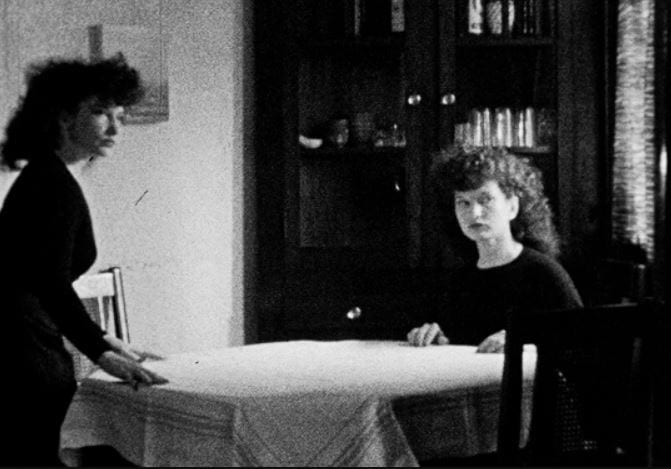
I don’t think that I can make that pronouncement, and I don’t intend to dive deep into the differences between the two styles in this article (assuming they’re even truly different; I don’t know if I’m entirely convinced). For what it’s worth, Deren didn’t identify as a surrealist and often criticized the movement. My purpose here isn’t to litigate the differences between surrealism and trance film (so please excuse the clickbaity title), but rather to analyze Lynch’s films through the lens of the trance film.
Devotees of Lynch’s films should be able to easily make connections to Sitney’s categorization of trance films: “its protagonists are somnambulists [sleepwalkers], priests, initiates of rituals, and the possessed. […] The protagonist wanders through a potent environment toward a climactic scene of self-realization. The stages of his progress are often marked by what he sees along his path rather than what he does” [6]. Elsewhere, he expands on the genre by saying that they are “cast in the form of a dream beginning and ending with images of its hero as a sleeper; finally, the protagonist is the passive victim of the action of the film” [7]. Trance films also “tend to resist specific interpretation,” which Lynch fans are certainly familiar with [8]. Trance films will often take on the quality of a psychodrama, in which the filmmakers casts themselves as the protagonist in a “quest for sexual identity” [9].
I’m hardly the first person to connect Deren and Lynch; in fact, Deren even gets a brief mention in David Foster Wallace’s famous profile on Lynch. However, Sitney’s theories regarding trance films rarely come up in these discussions or about Lynch in general. The only other example to bring up trance film in connection with Lynch is Dennis Lim’s book, David Lynch: The Man From Another Place. Lim briefly references trance films when he compares Meshes to Lost Highway, pointing out that like Lynch’s films, Meshes is “dense with proliferating doppelgängers and dreams within dreams” [10]. Incredibly, Lim and others recount that Lynch claims to have never seen Meshes and isn’t familiar with Deren, although the visual and thematic similarities between the works seem so striking that they almost have to be overt references. Despite his supposed unfamiliarity with Deren, Lynch is at least familiar with Cocteau’s Le Sang d’un poète, to the point that he included it when he hosted a televised retrospective on surrealism (see 4:45).
Of Lynch’s nine feature films, I think that four films, Eraserhead, Lost Highway, Mulholland Drive, and Inland Empire best lend themselves to readings as trance films, as does Twin Peaks: The Return on the television side of his work.
Eraserhead (1977)

To me, Eraserhead is Lynch’s purest trance film. Henry (Jack Nance) spends much of the movie wandering aimlessly through the hellscape reality in which he lives. He is almost woefully passive. He is unemployed (sorry, “on vacation”), but we don’t ever see him do anything productive during his days, he barely puts up a fight when he is told that he has to get married, doesn’t argue when Mary leaves, and pays little attention to his baby (which I will continue to refer to as “the baby,” even though Mary X famously says that “they’re still not sure it is a baby”).
The dystopian nature of Henry’s environment is important since the protagonists of trance films usually wander through “potent environments.” I wonder a little bit if the postindustrial wasteland and the weirdness Henry encounters in it is meant to be read literally, or if its gloominess is a subjective projection of his mind that feels similarly gloomy and out of place in the world. Regarding Meshes, Deren wrote that the film was concerned “with the interior experiences of an individual. It does not record an event which could be witnessed by other persons. Rather, it reproduces the way in which the sub-conscious of an individual will develop, interpret, and elaborate an apparently simple and casual incident into a critical emotional experience” [11]. Perhaps the same can be said about the stylized environment of Eraserhead: the wasteland is reproducing the anxiety, gloom, and out-of-placeness Henry feels every day.
One of the major elements of the trance film is the explicit simulation of the act of sleeping. Sitney describes director Kenneth Anger’s short film Fireworks (1947) as “a pure example of the psycho-dramatic trance film: the filmmaker himself plays out a drama of psychological revelation; it is cast in the form of a dream beginning and ending with images of its hero as a sleeper; finally, the protagonist is the passive victim of the action of the film” [12, italics mine]. In both Fireworks and Meshes, the protagonist is unambiguously shown going to sleep. While there is a layer of ambiguity in Eraserhead obscuring what is real and what is a dream, many of the most bizarre scenes are bookended by scenes of Henry laying on the bed and waking up. The first time the Lady in the Radiator is hinted at—with a light shining in it and a peek at the stage inside—is while Henry is laying on the bed daydreaming. His daydreams are interrupted by the baby crying. In the following scene, Henry and Mary attempt to go to sleep, but the baby’s insistent crying pushes Mary over the edge, and she leaves. After she walks out, Henry lays back down and stares at the ceiling. While we don’t see him fall back to sleep, many of the subsequent scenes can be interpreted as dreams, and I would argue they are a single dream until the moment that the eraser dust disperses in the air. The shot of the dust fades into an overhead shot of Henry asleep, holding and shaking his head as a light falls over him that looks like the sun coming up.
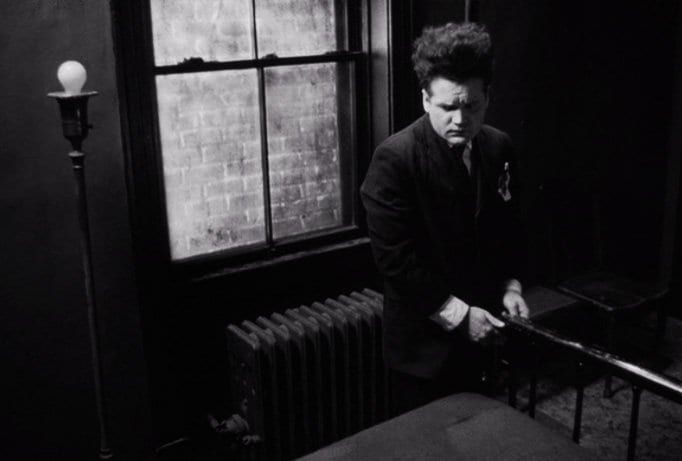
This reading of the film would mean that almost exactly 30 consecutive minutes of the film are a single dream sequence, from roughly the 43rd minute to the 73rd. While there are other points that could be pointed to where Henry falls asleep or wakes up that could alter this window, I think that the scene where the sun comes up is definitively the end of the sequence, and since the boils on the baby’s skin are no longer there later in the film, implying they were never there to begin with, I tend to mark the beginning of the dream sequence immediately before that point.
Henry is also lying on the bed immediately before seeing the Beautiful Girl Across the Hall bring home another man. Once again, we don’t see Henry fall asleep, but the Girl sees his head replaced with the baby’s during this sequence. Despite the metaphoric nature of the baby’s head on Henry’s body, I believe that this sequence occurs while Henry is awake since we never see him wake up. Henry’s “interior quest” ends in humiliation, leading to his final confrontation with himself: opening the baby’s swaddling cloth to see what was inside, murdering the baby, and—given that we see Henry with the Lady in the Radiator while bathed by a blinding white light—apparently committing suicide.
I would argue that Eraserhead still incorporates elements of the psychodrama, as well. While Lynch did not cast himself as Henry, casting a proxy—an actor that bears a physical resemblance or is otherwise viewed as a stand-in for the director himself—in a story that resembles the circumstances of Lynch’s own fatherhood seems to still fit the bill.
Lost Highway (1997)
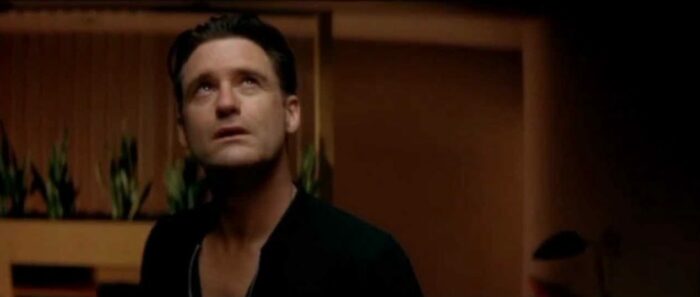
I don’t think that it’s a coincidence that three of the four feature films I’m examining form Lynch’s unofficial “LA trilogy,” as all three films examine complex questions about identity and feature amnesiac characters. In the case of Lost Highway, the protagonist, Fred Madison (Bill Pullman) is typically interpreted to have gone through a psychogenic fugue when he transforms into another character, Balthazar Getty’s Pete Dayton. While Pete isn’t as somnambulistic as Henry from Eraserhead, and the loss of memory and destruction of self associated with the fugue state qualifies him as the film’s sleepwalker.
I’ve already briefly touched on the similarities between Meshes and Lost Highway through Lim’s “doppelgängers and dreams within dreams” quote. Both Fred and Pete are relatively passive characters (outside of the murders), with Pete literally being “along for the ride” at points in the movie. Fred often seems disoriented and disheveled before the murder, including in the scenes surrounding his awkward sex scene with his wife Renee (Patricia Arquette). During this sequence, Fred is lying on the bed and looks barely awake. It’s possible that he falls asleep during this time. He looks over and sees Renee disrobe, and after she joins him in bed, the couple begins to have sex. There is a flash of white light, and the camera angle changes from primarily over-the-shoulder shots to a medium shot to their side. Immediately after they finish, Fred seems even more disoriented and begins recounting a dream he had where he couldn’t find Renee, instead finding her double in bed. The camera, which has been showing us Fred’s point-of-view of the dream, zooms in on Renee, and Fred awakens with a start as her screams echo. I think it’s entirely possible that the entire sex and dream-retelling sequence could be a dream itself.
During his discussion of trance film, Dennis Lim notes that “[Lost Highway’s] oneiric properties derive in part from its simultaneous vagueness and specificity. The repeated plunges into darkness, the drowsy trysts and aimless phone calls, all start to bleed into one another, even as characters wander into conspicuously numbered rooms and cite exact addresses” [13]. This description would also apply to Mulholland Drive and Inland Empire, in which names, addresses, hotel room numbers, and other details remain consistent despite often circuitous plots.
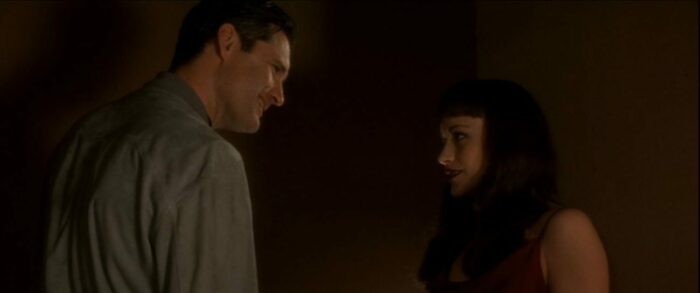
Additionally, there are parallels between the treatment of recurring objects and moments in Deren and Lynch. Sitney writes that “Un Chien Andalou is filled with metaphors—the eye and the moon, a drink shaker as a doorbell, the sea urchin, and underarm hair—but Meshes has none. Objects in the earlier film [Un Chien] recur, especially the box of the clown figure, but without the symbolic dimensions of the knife, key, and flower in Meshes, which accumulate their deadly charge through repeated use in slightly different circumstances” [14]. Deren herself wrote that “Part of the achievement of this film [Meshes] consists in the manner in which cinematic techniques are employed to give a malevolent vitality to inanimate objects.” [15]
Lynch has always had a fascination with certain objects and images that recur not only in individual films but across his body of work. One of the most famous is red curtains, which show up in Eraserhead (presumably, we obviously can’t see their color), Blue Velvet, Twin Peaks, Mulholland Drive, and the Madison house in Lost Highway. The curtains aren’t metaphors for anything, but because we’ve seen them so often before in Twin Peaks and elsewhere, they are imbued with a level of meaning to the audience. The same can be said about lines of dialogue in Lost Highway. Obviously, Deren’s film was silent, so she didn’t get to use recurring dialogue in this manner, but Lynch doesn’t have those restrictions, providing an extra layer of menace and meaning to recurring lines like “We’ve met before, haven’t we? At your house. Don’t you remember?”
Mulholland Drive (2001)
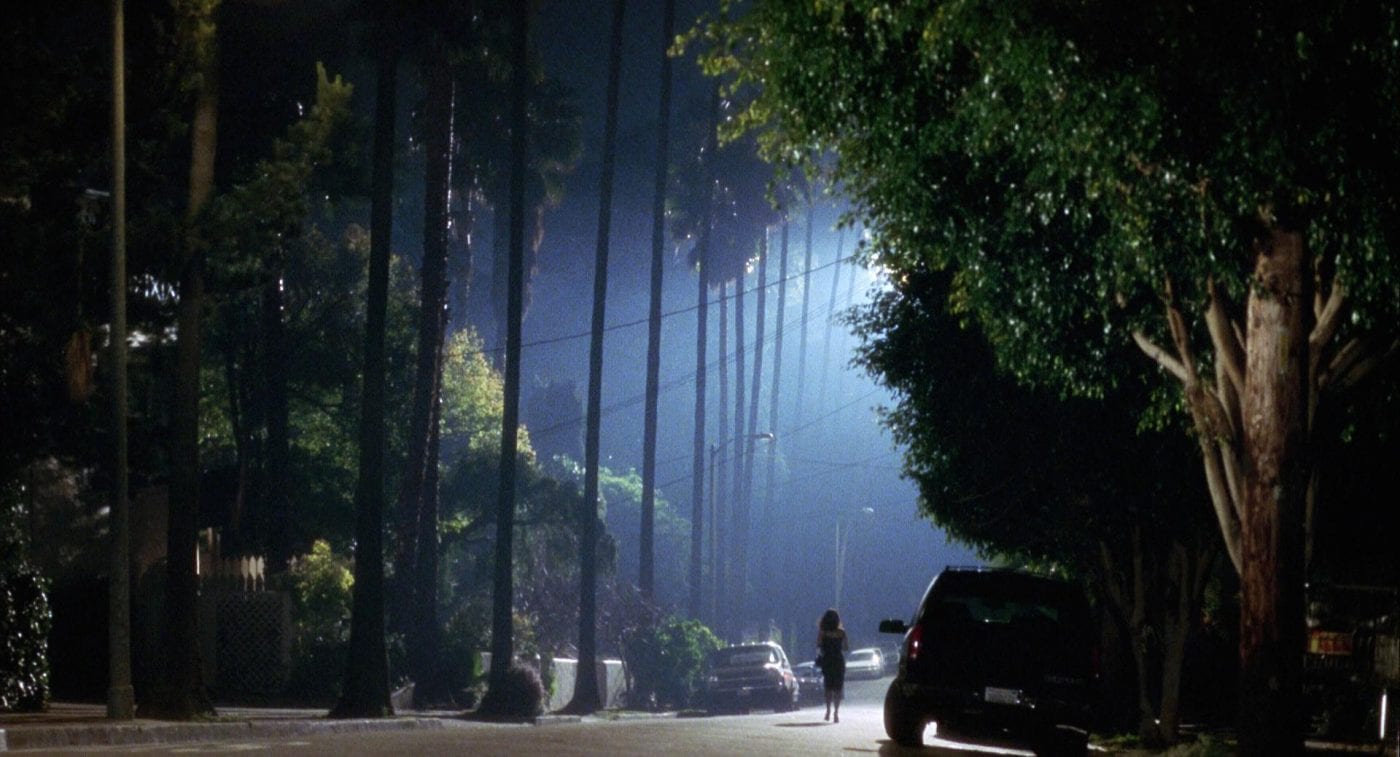
In Mulholland Drive, we have an obvious somnambulist in Laura Harring’s amnesiac Rita/Camilla. After her car accident, Rita/Camilla aimlessly wanders the streets of Los Angeles, eventually finding shelter in the house where Betty/Diane (Naomi Watts) is staying while her aunt is away.
However, Mulholland Drive offers some interesting variations on the trance film. According to Sitney, “it is part of the nature of the trance that the protagonist remains isolated from what he confronts; no interaction of characters is possible in these films” [16]. I have been interpreting this statement very broadly, looking more toward a lack of emotional connections than true isolation. Yet in Mulholland Drive, Rita not only makes a genuine connection and falls in love, but does it so completely that her identity begins to merge and blur with Betty’s, and vice-versa.
Additionally, while most of Mulholland Drive appears to be framed as a dream, it’s notable that it doesn’t appear to be the somnambulist’s dream. The first image after the opening jitterbug dancing vignette is a point-of-view shot that we later learn belongs to Betty/Diane depicting her head falling toward a pillow. We also get an explicit emergence from the dream when the Cowboy kicks off the film’s final act by telling Betty/Diane “Hey, pretty girl, time to wake up.” This fact complicates things a bit: How can the protagonist wander toward “a climactic scene of self-realization” if the action doesn’t occur in their own mind? I think that at least part of the answer lies within Rita and Betty’s relationship—the blurring of their identities causes Betty to take on some of the traits of the somnambulist.
A noticeable shift occurs in their personalities after Betty and Rita discover the body in Diane Selwyn’s apartment, literalized by the delay effect that is applied as they run out of the apartment. There are some practical reasons for this, as it was one of the final scenes before the end of the television pilot from which the film was finally conceived. After this point, the blurring of Betty and Rita ramps up, as does the dreamlike effect. While she isn’t the primary somnambulist, Betty/Diane does in fact reach a point of self-realization in which she confronts her past. Unfortunately, she isn’t able to overcome the guilt she feels over her jealously and hires a hitman to kill Rita/Camilla, then commits suicide.

While the first part of Mulholland Drive is filled with items and phrases whose repeated use allows them to accumulate meaning to the audience, the narrative shift adds another dimension to the objects. This is above all the case with the iconic item of the film—the blue key. Keys are featured prominently in both Mulholland Drive and Meshes. In Deren’s film, the key is removed from Maya and her doppelgängers’ mouths multiple times and frequently transforms into a knife. The key serves a similarly deadly purpose in Mulholland Drive, as a signal to Betty/Diane that the hit on Rita/Camilla has been completed.
Inland Empire (2006)
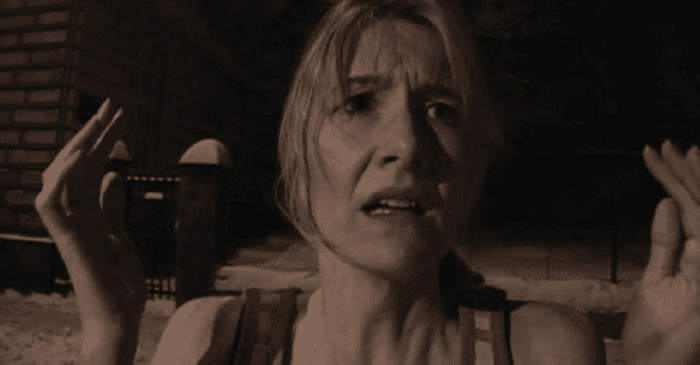
Easily the most inscrutable of Lynch’s films, parts of Inland Empire can be read as a trance film. In the first moments that we see Laura Dern’s Nikki Grace, she seems confused and disoriented by Grace Zabriskie’s unnamed Russian visitor (although in fairness, who wouldn’t be?). As the film goes along, Nikki increasingly loses her grip on reality and her identity. The turning point appears to be two sex/love scenes that bookend the first real sign of her slipping into the world of the character she is playing in the movie. After shooting a love scene with her costar Devon (Justin Theroux), the pair are acting out a scene when Nikki exclaims “This sounds like a dialogue from our script!” The crew is baffled by this outburst, and Nikki eventually regains her sense of reality. Not long after, Nikki and Devon have sex for the first time while her husband Piotrek (Peter J. Lucas) watches from the shadows. Devon calls Nikki her character’s name, Sue, throughout the scene.
I think that it’s notable that there is a literal somnambulist in the film, the hypnotized Doris (Julia Ormond). Doris has been charged with killing Nikki with a screwdriver by The Phantom. While she isn’t the film’s protagonist, she adds to the nightmarish quality of the film. After Doris achieves her goal, Nikki appears to die, only to have the camera pull back and reveal the film crew. With the scene over, Nikki unsteadily stands up and wanders off the set. Nikki seems more entranced in the subsequent scenes than she has at any point in the film. There are other moments throughout the film when Nikki feels incredibly passive and disoriented, most notably in the pink room with the sex workers. Throughout these scenes, Nikki is largely relegated to sitting against the wall, barely reacting to what is happening around her.
At one point as she begins losing her grip on reality, Nikki steps through a set door into a completely different location. While this isn’t a trope exclusive to trance film (similar things happen in Monsters, Inc, for goodness sake), unexpected setting changes are a staple in Deren’s early films. In Meshes, one of Deren’s doppelgängers advances on her while she sleeps, and consecutive steps fall on different surfaces: sand, mud, grass, concrete, and then back to the carpet in Deren’s home. In At Land, the protagonist—again played by Deren—seamlessly alternates from a beach to a dinner party between shots. Regarding the sequence in Meshes, Deren wrote that:
What I meant when I planned that four stride sequence was that you have to come a long way—from the very beginning of time—to kill yourself, like the first life emerging from the primeval waters. Those four strides, in my intention, span all time. Now, I don’t think it gets all that across—it’s a real big idea if you start thinking about it, and it happens so quickly that all you get is a suggestion of a strange kind of distance traversed [17].
While Deren admits that she doesn’t know if this idea gets across, I wonder if Lynch is trying to achieve a similar effect through Nikki’s sudden unexplained leaps through space. If nothing else, Nikki’s story does have a sense of “a strange kind of distance traversed” that allows the audience to empathize with the exhaustion she feels as she wanders the streets of LA.

Somewhat surprisingly, Inland Empire is one of few Lynch works where the climactic confrontation with the self occurs via the somnambulist’s doppelgänger. The only other true confrontation is at the end of Twin Peaks Season 2, in which Cooper confronts and capitulates to his double in the Red Room. I would argue that the doppelgänger confrontation doesn’t really occur at the end of Season 3, since even though Cooper is present for the climactic fight against Mr. C, Freddie does all the heavy lifting (unless you want to get into discussions about whether Freddie is a projection of Cooper’s dream, but that’s a topic for another article).
Though brief, Nikki does confront her double at the end of the film. As Nikki wanders the halls of a hotel, she encounters the Phantom. She attempts to shoot him to no avail, finally succeeding after he dons a grotesque version of Nikki’s face. Only then is she able to enter the hotel room, embrace the Lost Girl, and apparently find peace.
Twin Peaks (2017)
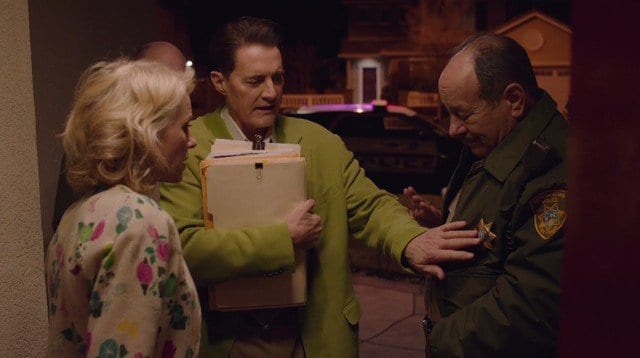
It is probably obvious to all that the somnambulist in The Return is Dougie/Cooper. Dougie/Cooper vacantly wanders through his surroundings as no other Lynch character has since Henry in Eraserhead. Luckily for Cooper (and the audience), he achieves his “climactic scene of self-realization,” waking up and regaining his previous confidence and acuity. Unfortunately, we only get the reawakened Cooper that we know and love for a brief amount of time.
The Return is an interesting case study in the psychodramatic trance film. While he doesn’t play the lead role, Lynch reprises his role as Gordon Cole, and noted Lynch surrogate Kyle McLachlan plays the main protagonist. Lynch further blurs the lines between the two characters when Cooper, Cole, and Diane are walking in the dark in Episode 17. At times, Cole has visions and dreams that seem to muddy his sense of reality and self. After Cooper and Diane have sex, Cooper falls asleep, and upon waking there is a noticeable shift in his personality. While I don’t think that he isn’t passive enough in these final scenes to be considered a somnambulist, “our” Cooper no longer seems present.
While revisiting some of Season 3, I was struck by the fact that outside of the opening credits and a shot at the very beginning of the first episode in which the camera glides the chevron floor, the first new footage of the Red Room doesn’t show Cooper, Laura, Mike, or any other character, but a statue [18]. This isn’t the only statue to show up in Lynch’s works, but I thought that it was notable for one to be featured at such a notable moment.
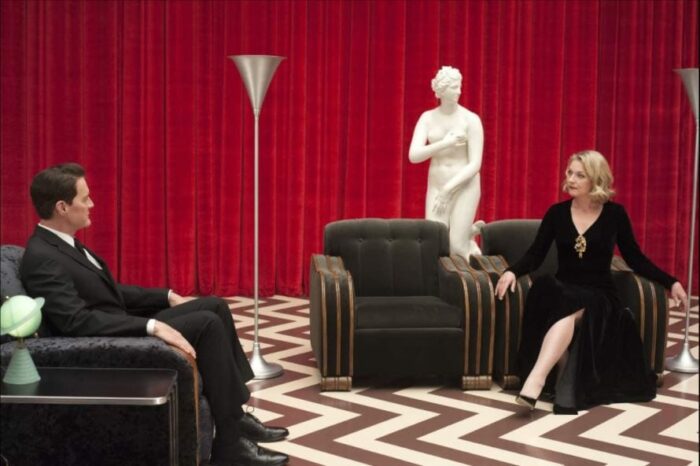
Regarding statues, Sitney states that “behind all the employments of statue in the trance film, however obliquely, is the myth of Pygmalion” [19]. The myth tells the story of an artist who falls in love with his sculpture, which subsequently comes to life. In modern times, the story has been the basis for artists and non-artists alike who fall in love with their creations, most notably in the musical My Fair Lady, in which the phonetician Professor Henry Higgins “sculpts” the rough-edged Eliza Doolittle into a lady (a concept that practically begs for a feminist analysis).
The inclusion of statues is obviously not unique to trance film or avant-garde film, but Sitney’s statement did get me thinking about how our somnambulist, Dale Cooper, could be Pygmalion. The prevailing interpretation of the ending of The Return is that Cooper returns to the past, rescues Laura from being killed by Leland/Bob, and kicks off some sort of time-loop or alternate future. While Pygmalion’s story ends happily, Cooper’s obsession with trying to “sculpt” Laura’s history and future has unexpected, disastrous consequences. Also, Cooper leading Laura away from her death by the hand, only to have her disappear, strongly resembles the myth of Orpheus, in which a musician travels to the underworld to bring back his wife. The only condition on Orpheus’ quest is that he cannot look back at his wife until they cross the threshold from the underworld. At the last second, Orpheus looks back, and his wife falls back into the darkness. Coincidentally, the Orpheus myth was later adapted by none other than Jean Cocteau, director of the prototypical trance film Le Sang d’un poète. This might also be a good time to mention that according to Sitney, avant-garde filmmakers of Deren’s generation tended to move on from trance films to mythopoeic films, which were focused on “the making of a new myth or the reinterpretation of an old one” [20].
Final Thoughts
I hope that through these analyses, I’ve been able to show that despite whether or not any of Lynch’s films benefited from the direct influence of trance films, examining them as such can be a fulfilling exercise that opens up some interpretive pathways. I also hope that I’ve piqued your interest in the films of Maya Deren and other avant-garde filmmakers of her time. A lot of their films—including Deren’s Meshes and At Land—are floating around on YouTube, and Deren’s films recently received a Blu-ray release. Avant-garde films from the 1940s-1960s can be very challenging, but if you’re already a fan of David Lynch, you’re certainly up to the task.
[1] Sitney is usually credited with the term, and in fact claims to have invented the term in Visionary Film (xiii); however, in the introduction to the essay collection Film Culture Reader, which was also compiled and edited by Sitney, he credits the term to Tyler with the term, as do others elsewhere in the book.
[2] P. Adams Sitney, Visionary Film: The American Avant-Garde 1943-2000, 3rd ed. (New York: Oxford University Press, 2002), XIII.
[3] Ibid, 80.
[4] Ibid, 10-11.
[5] Ibid, 11.
[6] Ibid, 18.
[7] Ibid, 87.
[8] Ibid, 20.
[9] Ibid, 14.
[10] Lim, David Lynch: The Man from Another Place (New York: Amazon Publishing, 2015), 133.
[11] Maya Deren, quoted in P. Adams Sitney, Visionary Film, 9.
[12] Sitney, Visionary Film, 87. Emphasis added.
[13] Lim, The Man from Another Place, 134.
[14] Sitney, Visionary Film, 13.
[15] Ibid, 9.
[16] Ibid, 18.
[17] Deren, quoted in Sitney, Visionary Film, 19.
[18] This caveat excludes the opening scene where Cooper talks to The Fireman, which doesn’t appear in the Red Room proper, as well as the archival footage of Laura and Cooper talking at the end of Season 2.
[19] Sitney, Visionary Film, 30.
[20] Ibid, 136.




I do agree with this, yes. Thank you!
Mr. Nilsson, Borås